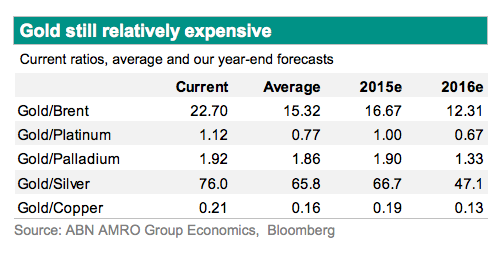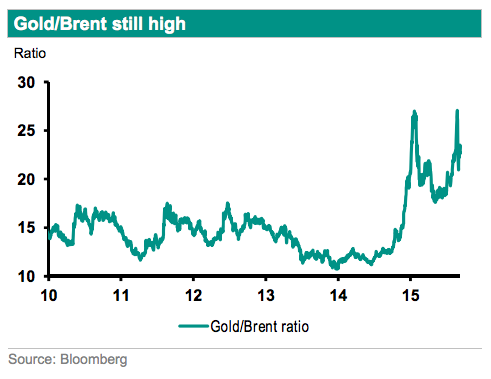Gold price: Bears take charge again
On Wednesday, the gold price took a huge hit after economic news from the US gave fresh impetus for an interest rate hike when the Federal Reserve meets next week.
In afternoon dealings on the Comex market in New York, gold futures for delivery in December lost $15.60 to $1,105.30 an ounce. Gold came close to crashing through the psychologically important $1,100 level falling 1.9% from yesterday’s close during brisk lunchtime trade. Gold dropped to a five-year closing low of $1,084 little over a month ago.
The US Labor Department’s job openings and labour turnover report released Wednesday showed an increase in unfilled position to 5.75 million, the highest level in at least 14 years.
The absence of inflation has reduced gold status as a hedge and expectation of the first interest rate hike in the world’s largest economy since 2006 has been a drag on the price for years. Gold has a strong inverse relationship to interest rates because the metal offers no yield. Higher rates also boost the value of the dollar which usually moves in the opposite direction of the gold price.
A new report by ABN Amro suggest another reason for gold’s weakness. Compared to cyclical assets (gold is not considered a cyclical asset) bullion is still expensive.
Georgette Boele of the Dutch bank’s global economics team in a Wednesday research note argues that even at a five-year low, gold relative to copper, oil and other precious metals is trading at values way above the long-term average since the 1990s:

Source: ABN Amro
Cyclical commodities have underperformed as projects that were initiated during the boom times come on stream and create oversupplied markets – notably in crude oil. At the same time the demand side outlook has deteriorated – especially in top commodities consumer China:
[The] deterioration in investor sentiment supported gold. In addition, investor sentiment has deteriorated this year because of a number of factors. In general, cyclical assets underperform when uncertainty and nervousness increase. The environment has been suitable for gold to outperform.
However, gold’s safe haven status has been sharply reduced because of investors positioning in gold. As a result, gold has been able to profit less than in previous periods of risk aversion when investor positioning was lower.
The bank believes these ratio’s will move closer to the historical averages as the global economy strengthens and demand for cyclical commodities pick up and investors continue to rotate out of the gold market into riskier assets.
The bank’s house view is a gold price of $1,000 an ounce by the end of the year, weakening to $800 an ounce at the end of 2016.
{{ commodity.name }}
{{ post.title }}
{{ post.date }}


Comments
george allan bloom
just follow the open interest change and net change/volume. the smaller the netchange/volume figure is the more bullish the market. and upmoves should coincide with rising open interest, and downmoves with falling open interest. that has not been the pattern of late, so wait for it to began occurring on a daily basis to consider buying long metals.